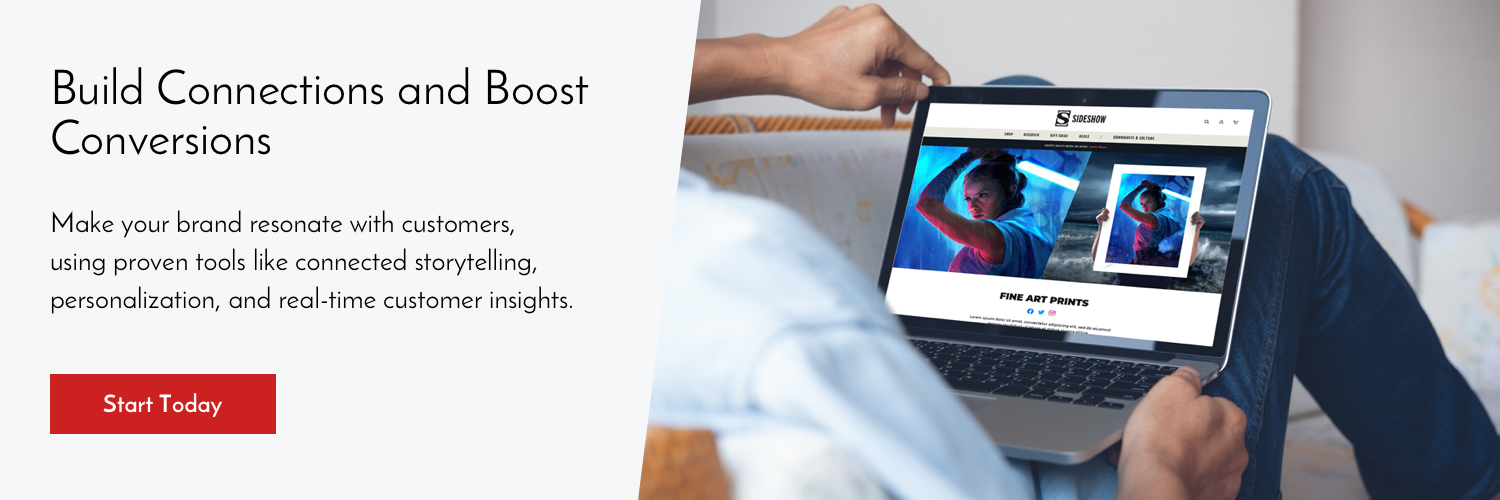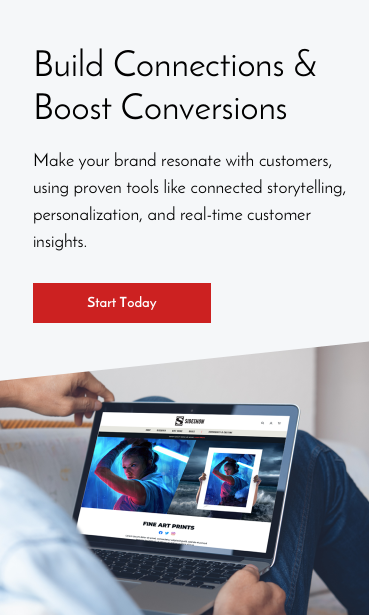"Buy Now, Pay Later" (BNPL) is an alternative payment method that has revolutionized ecommerce.
It enables consumers to make purchases they couldn’t otherwise make, helping businesses increase sales and appeal to a wider market.
But how important is buy now, pay later for businesses today?
Are consumers still opting for it over more traditional payment options like credit and debit card sales? What about the future — will Gen Z and Gen Alpha be just as interested in BNPL as Millennials have been?
What do ecommerce businesses need to know before implementing this financing option at checkout?
Let’s take a look — this guide dives into the impact of BNPL for ecommerce businesses.
What Is Buy Now, Pay Later (BNPL)?
Buy Now, Pay Later online shopping is a payment method that allows customers to buy a product and then pay for it in multiple installments over a determined schedule. This system of ecommerce installment payments provides customers with more flexibility while giving them an option to buy a product they might otherwise have decided against.
In order to implement and manage a BNPL strategy, ecommerce brands typically work with a payment partner. This payment partner has the expertise and systems in place to handle working with a customer for future payments. In a BNPL model, ecommerce store owners receive the payment at the time of purchase and the payment partner takes on the risk from the customer.
The Importance of BNPL in Ecommerce
Implementing BNPL is a step in the right direction for brands that want to align their business model with consumer trends.
People want payment flexibility—they want to pay the way that works for them. With buy now, pay later, sellers can convert buyers who don’t have a card or who prefer not to use their card.
Ecommerce businesses that don’t offer this type of payment flexibility might miss out on sales opportunities. Buyers will turn to competitors who enable easy, flexible payments.
Understanding How BNPL Works for Your Customers
When a customer navigates to the checkout page to make a purchase, they can choose a traditional online payment option such as credit, debit, or PayPal. Or, they can choose the BNPL option.
Once they click the BNPL option, they’ll be asked to fill out a short credit application. Usually, they’ll need to enter personal information, such as their name, social security number, and their payment method.
Next, the BNPL provider runs a soft credit check that does not impact their credit.
Within seconds, they are approved or denied. What’s appealing about the buy now, pay later option for many consumers is that even customers with bad credit can be approved. Also, as long as they pay their installments on time, they can avoid interest or fees.
On the other hand, customers who don’t pay on time can end up paying more for their purchases through interest and late fees.
How the buy now, pay later solution is set up depends on the provider you work with. Some of the most common payment models include the following:
- Pay in four installments: The customer pays in four equal installments. If they pay on time, they won’t accrue any interest.
- Pay in the short term with multiple installments, with no interest but with a price difference: For example, a customer could be offered the option to pay in one payment of $97, or three monthly payments of $37 each. The latter totals $111, meaning that the customer is paying an additional flat fee ($14) for the option to spread out their purchase, passing some or all of the vendor's additional overhead to the consumer.
Pay in the intermediate term, with multiple installments, with no price difference but with interest accruing: The specific details can vary significantly from retailer to retailer, but generally speaking, the time frame is three years or less.
Benefits to Retailers Using BNPL
Implementing a BNPL strategy can significantly benefit your ecommerce business. Here's why:
- Increased Sales: By offering flexible payment options, you can encourage customers to make purchases they might have hesitated on due to immediate financial constraints. This can lead to increased sales and average order values.
- Customer Attraction and Retention: BNPL can make your business more attractive to potential customers, particularly younger demographics like Millennials and Gen Z who are looking for flexible, non-traditional credit options. It can also increase customer loyalty as customers appreciate the flexibility and convenience.
- Improved Cash Flow: With BNPL, you receive payment at the point of sale, improving your business's cash flow. The BNPL service provider handles the risk of customer default or non-payment.
- Decreased Cart Abandonment: Offering BNPL options at checkout can reduce cart abandonment rates. Many customers abandon their carts due to a lack of satisfactory payment options, and BNPL can address this issue.
- Enhanced Customer Experience: Offering BNPL can improve the overall customer experience. It allows customers to manage their finances more effectively and purchase items they desire without having to pay the full cost upfront.
Why Consumers Prefer BNPL
Consumers prefer BNPL because it’s credit without the credit card. It makes it easier to purchase an item because they have more time to pay without incurring any interest or fees. One study found that 80% of consumers prefer BNPL over credit cards for purchases under $100.
Pros and Cons of BNPL
Using a buy now pay later business model can open the door to more opportunities for your store and your customers. However, there are some downsides to consider. Here’s an overview of the pros and cons of BNPL so you have a balanced view.
Pros of Buy Now Pay Later Solutions
- Higher average order value. Because people can pay in installments, they’re more likely to spend more when purchasing.
- A better customer experience. Your customers have more flexibility because they can purchase an item or items they don’t have cash for without using a credit card. They can also save for big-ticket items with lower interest rates than their credit card rate.
- Less risk. The BNPL provider takes on the risk if the customer doesn’t pay their installments on time.
Cons of Buy Now Pay Later Solutions
- Can lead to higher debt for consumers. BNPL users tend to have fewer liquid assets and higher debt than non-users, which means they’re less likely to be able to service their loan.
- Less experienced shoppers may buy beyond their means. While easier payments are a plus for many consumers, it can lead to more impulse purchases for less experienced buyers.
- Cuts into profits. Like credit cards, BNPL providers charge a transaction fee for every purchase. But depending on your provider, you may pay more per transaction than you would for credit card sales. While large ecommerce brands can easily absorb this cost, it can be difficult for small businesses.
Overview of Leading BNPL Providers
Some of the largest buy now, pay later companies include:
- Klarna: Over 20,000 online merchants use Klarna. It stands out by offering customers hassle–free returns and a price comparison tool.
- Afterpay: This provider offers an interest-free four-installment option and sends reminders to help customers avoid late payments.
- Shop Pay: Shopify users can take advantage of the e-commerce platform’s built-in buy now, pay later feature. This feature lets customers choose between bi-weekly installments and monthly installments with interest.
- Bread Pay: Customers benefit from an auto-pay option and no prepayment penalties. The installment loans range from three to 48 months.
- Affirm: This BNPL provider has two customer options — monthly payments or four interest-free payments.
- Sezzle: Customers can pay monthly (up to 48 months) for larger purchases or pay in two or four installments with zero interest.
How to Choose the Right Buy Now, Pay Later Company
With so many well-known buy now pay later providers, how do you know which one is best for your business?
Ultimately, your BNPL solution is for your customers, so factor in the needs of your market.
- Do they need a monthly installment loan for big-ticket items? Make sure your provider has an option for monthly payments.
- If you have younger buyers or shoppers who might struggle to make their payments on time, look for providers with low fees and options like auto-pay or payment reminders.
- Do your customers rarely spend over $100? They might be happy with a zero-interest BNPL option that they can pay back quickly.
You should also consider how well the BNPL company works for your business.
- Are the transaction fees reasonable? How do they compare to what you’re paying for credit card transactions? Once the solution is up and running, our partners at BigCommerce report that the commission paid to a BNPL provider is between 2%-6% of each transaction, plus a fixed fee.
- Will it be easy to integrate your BNPL solution with your current ecommerce platform?
- What about customer service and brand reputation? Many BNPLs are relatively new fintech companies. All of them might not be around in five or ten years, so choose a provider that has a good business model and is popular with both consumers and other e-commerce brands.
Challenges in Implementing BNPL
A BNPL solution is an investment, as choosing a BNPL provider costs money to implement and maintain. Of course, every investment needs to be weighed against the revenue it will gain.
At first blush, that can seem a bit steep, but the case becomes more compelling when weighed against the combination of higher AOV and higher checkout conversions – not to mention the appeal to a generation that's actively shunning credit cards.
Klarna also notes that, for luxury brands, offering a Buy Now, Pay Later online shopping option might seem to contradict the brand's messaging and positioning with consumers. But for luxury brands looking to attract a younger audience, offering additional payment options encourages them to buy where they otherwise would not have.
The Future of BNPL
The BNPL market is expected to grow at a compound annual growth rate of over 24% from 2023 to 2030. As more consumers begin using buy now, pay later options routinely, they’re going to expect BNPL as a standard checkout feature.
It’s also becoming a fast staple for younger generations. Gen Z already uses BNPL for small, everyday purchases like clothing and groceries. And even older generations are using it for larger purchases like furniture.
Implementing BNPL now can help your ecommerce brand win over customers, increase sales, and establish your business as a customer-centric brand.
Get Started With BNPL with Help From Guidance
Buy now, pay later shopping options are proving to be the future for ecommerce businesses, but they are not a one-size-fits-all solution.
The best solutions will be adapted by the vertical and the audience while addressing your company's financial situation, perceived risks, and growth opportunities.
Get in touch with Guidance and learn how a BNPL solution can increase your average order value, checkout conversions, and customer lifetime value (LTV).


